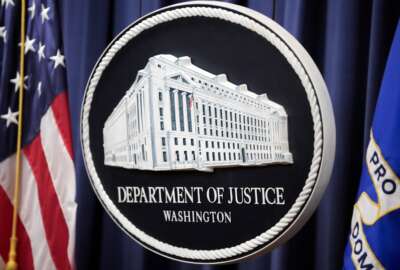Higher USPS revenue ‘still not enough’ to outpace costs, DeJoy tells board
Postmaster General Louis DeJoy says USPS is prepared to handle increased workloads ahead of Election Day and its holiday season.
The Postal Service is seeing steady growth in revenue, but not enough to outpace its substantial operating costs.
USPS saw a $2.5 billion net loss for the third quarter of fiscal 2024 — higher than the $1.7 billion net loss it saw for the same period last year.
USPS reported $18.8 billion in revenue this quarter — 1% higher than revenue for the same quarter last year. It’s also the agency’s fourth consecutive quarter of revenue growth.
However, the agency also saw a more than 4% increase in its operating costs, which grew to more than $21 billion for the quarter.
Postmaster General Louis DeJoy said Thursday that USPS plans to accelerate efforts to cut costs and boost revenue.
“While we are growing revenue and cutting costs at an aggressive rate, it is still not enough to overcome the historic trajectory, the substantial inflation, our difficulties in making changes and the cost of doing so,” DeJoy told the USPS Board of Governors.
USPS is cutting costs by reducing total work hours, reducing truck trips between mail processing plants and post offices, and transporting less mail through air freight contractors.
USPS Governor Dan Tangherlini, a former administrator of the General Services Administration, said the agency’s financial position “continues to degrade.”
“Operating costs are not falling below our improving revenue, and most importantly, service has not improved at the same rate as price increases,” Tangherlini said.
“While the board remains committed to the imperatives expressed in the Delivering for America plan to rebuild USPS, infrastructure and systems, I’m concerned about implementation, performance and our ability to maintain customer support for these hard and necessary changes,” he added.
First-class mail revenue increased by more than 2%, despite a 3.4% decrease in volume. USPS has raised prices on its mail products twice a year. It raised the cost of a first-class stamp to 73 cents in July — up from 68 cents.
“While the board remains committed to the imperatives expressed in the Delivering for America plan to rebuild USPS infrastructure and systems, I’m concerned about implementation performance and our ability to maintain customer support for these hard and necessary changes,” Tangherlini said.
USPS is also close to maxing out its $15 billion borrowing limit from the Treasury Department.
DeJoy said USPS is still addressing regional delays in areas where the agency implemented its network modernization efforts.
“We addressed local pockets of deficient performance and made improvements. We expect these improvements to continue in the coming weeks,” he said.
USPS delivered more than 86% of first-class mail on time in the third quarter of this fiscal year — compared to about 92.5% for the same period last year.
USPS, he added, expects “improvements to continue in the coming weeks.”
“Change of this magnitude is never easy. However, with each stumble, the organization learns and our future execution becomes more precise and responsive as we progress through our initiatives. And we must and will progress,” DeJoy said.
USPS Governor Ron Stroman, a former deputy postmaster general, said USPS still has a long way to go, under its 10-year reform plan, before it achieves long-term financial stability.
“This transition will be long and complex. Our employees and our customers, our suppliers, and other stakeholders will need to embrace change. But how you implement change matters,” Stroman said.
Despite continued declines in first-class mail volume, Stroman urged USPS to improve its on-time delivery, adding that “maintaining great customer service is essential to keeping your customer base.”
“There remains great demand and need for high-quality mail and package service, particularly in working-class families and small businesses, which are the backbone of America’s economy,” Stroman said.
DeJoy said USPS is prepared to handle an increased workload ahead of this November’s election and its peak holiday season at the end of the year.
“Processes are already underway to ensure our service across the nation excels, as it has in the past,” DeJoy said. “We are already out in the field engaging every facility, every manager, and every employee to ensure conformity with our proven processes.”
USPS delivered mail-in ballots in the 2022 midterm election more quickly than it did in 2020, when the pandemic led to a historic surge of voting by mail.
USPS, in its 2022 post-election analysis report, found it delivered at least 105.4 million ballots during the midterm election season.
The agency said it delivered 98.96% of general election ballots within three days, and that on average, it delivered ballots in less than two days.
In 2020, the agency delivered 135 million mail-in ballots, and delivered 97.9% of ballots within three days.
“The Postal Service is committed to ensuring that official election mail is delivered timely, but we also need our partners in the field to help us succeed and work collaboratively with us to leverage the tools to help,” said Amber McReynolds, a USPS governor and chairwoman of its election mail committee.
Copyright © 2024 Federal News Network. All rights reserved. This website is not intended for users located within the European Economic Area.
Jory Heckman is a reporter at Federal News Network covering U.S. Postal Service, IRS, big data and technology issues.
Follow @jheckmanWFED






